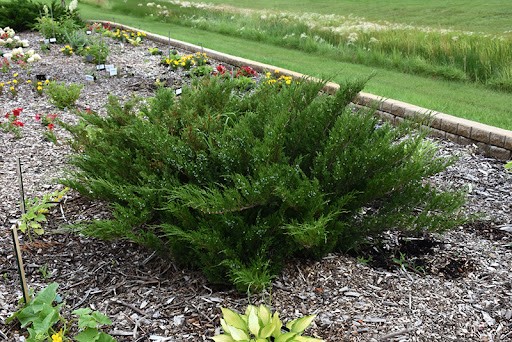Sabina archasi

Juniperus sabina, the savin juniper or savin, is a species of juniper native to the mountains of central and southern Europe and western and central Asia, from Spain to eastern Siberia, typically growing at altitudes of 1,000–3,300 metres (3,300–10,800 feet). he shrub is very variable in shape, up to 1–4 metres (3+1⁄2–13 feet) tall. The leaves are of two forms, juvenile needle-like leaves 5–10 millimetres (1⁄4–3⁄8 inch) long, and adult scale-leaves 1–2 mm long on slender shoots 0.8–1 mm thick. Juvenile leaves are found mainly on seedlings but mature shrubs sometimes continue to bear some juvenile leaves as well as adult, particularly on shaded shoots low in the crown. It is largely dioecious with separate male and female plants, but some individual plants produce both sexes. The cones are berry-like, 5–9 mm in diameter, blue-black with a whitish waxy bloom, and contain 1-3 (rarely 4 or 5) seeds; they are mature in about 18 months. The male cones are 2–4 mm long, and shed their pollen in early spring.
All parts of the plant are poisonous due to several toxic compounds including ethereal oils. This plant is the alternate (telial) host of the Pear Rust fungus Gymnosporangium fuscum.
Introduced to the Botanical Garden. The seeds of this species were brought from sown in the Botanical Garden by academician F.N. Rusanov in 1954. In 1955, in the spring, they were sown in the nursery and the introduction of these species was studied, also in 04.18.1956 they were. A nursery of Coniferous trees was planted at the exposition. Currently, 1 adult year of the tree of this species grows in this exposition.




